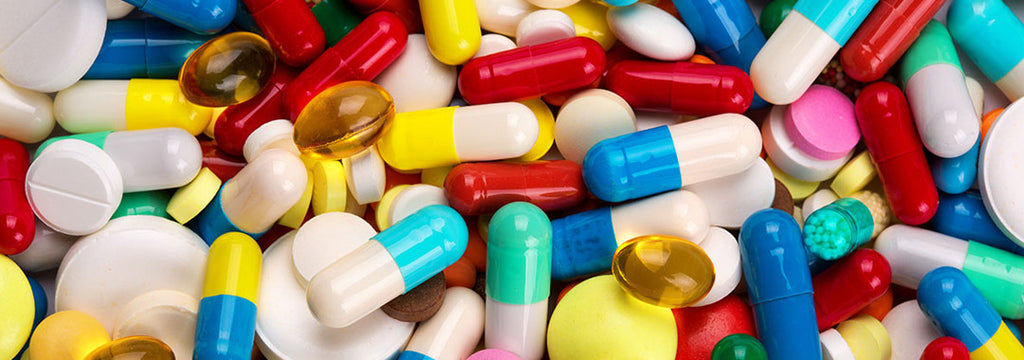
One of the most frustrating and challenging parts of treating celiac disease is how much of a trickster gluten can be. Gluten hides, and hides well.
Not only does gluten show up in foods that we least expect it to, it disguises itself under different names, and also shows up in things like beauty products, cleaners, and yes, medicine.
Unfortunately, current FDA standards for medication do not include specific mention of gluten or wheat products. So what are we supposed to do?
Where is Gluten Hiding in my Medicine?
Both prescription and non-prescription oral medication in the form of capsules and tablets are a potential source of gluten contamination. In addition to active ingredients which have strict labeling regulations, medications contain fillers, which exist in the form of absorbents, protectants, binders, coloring agents, preservatives, flavors and bulking agents. There is minimal oversight for the regulation and labeling of these filling agents.
These ingredients, collectively labeled as excipients, all have the potential to contain gluten ingredients. Starch, a commonly used excipient, can come from corn, tapioca, potato, or wheat, but it’s source is often not labeled. Gluten can also be hiding in other ingredients such as dextrates, dextrins, dextri-maltose, and maltodextrin.
How Can I Check if my Medication Contains Gluten?
Current FDA standards don’t require companies to mention gluten or wheat in product labeling. This requires us to be extra careful detectives when trying to determine whether or not certain medications are safe.
While the FDA is required to list the inactive ingredients, there are problems with this. First of all, often times the inactive ingredient lists are only available in the package inserts of the medication. You may only be able to access the package insert information by asking your pharmacist, calling the manufacturer, or using DailyMed’s searchable medication database.
Additionally, the inactive ingredients are often listed in a way that makes it incredibly difficult to tell if the product contains gluten. Manufacturers are not required to label which kind of starch they are using, nor required to detail if gluten is lingering in any other ingredients.
It gets even more complicated, because many drug companies won’t guarantee their products are gluten-free due to the potential risk of cross-contamination during the manufacturing process.
What Else Can I Do?
This frustrating process leaves us with very limited resources and information in order to determine the status of our medication. Not to mention that not everyone has the time or the accessibility to search databases, contact manufacturers or make multiple pharmacy visits. Even worse, all of this time consuming hoop-jumping won’t guarantee a conclusive result.
Part of this problem would be solved if drug labeling laws required that drug labels clearly identify the presence of gluten in a product. Another step that would clearly change this reality is if the FDA established a gluten-threshold for drugs. Not only would these standards make life easier for the consumer, they would also help medical professionals treat patients with celiac disease and gluten-related health complications.
It is important to take the precautions necessary to educate ourselves on the status of our medications, especially if the ingredients list starch without detailing the source. Be careful to consistently check if the product manufacturer has changed, as this can alter the status of the product’s ingredients. Utilize the resources below to acquire more information about the medications that you are taking!
Important Resources
GlutenFreeDrugs lists over 150 drugs and information on their gluten status.
DailyMed’s searchable medication database
Read about Michael Weber, who is suing the FDA for failing to regulate gluten in medications.



Leave a comment